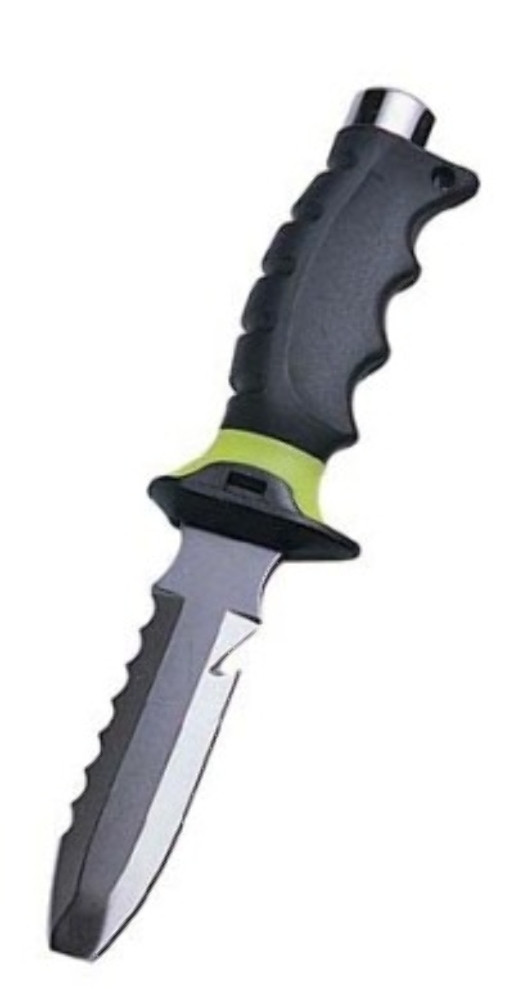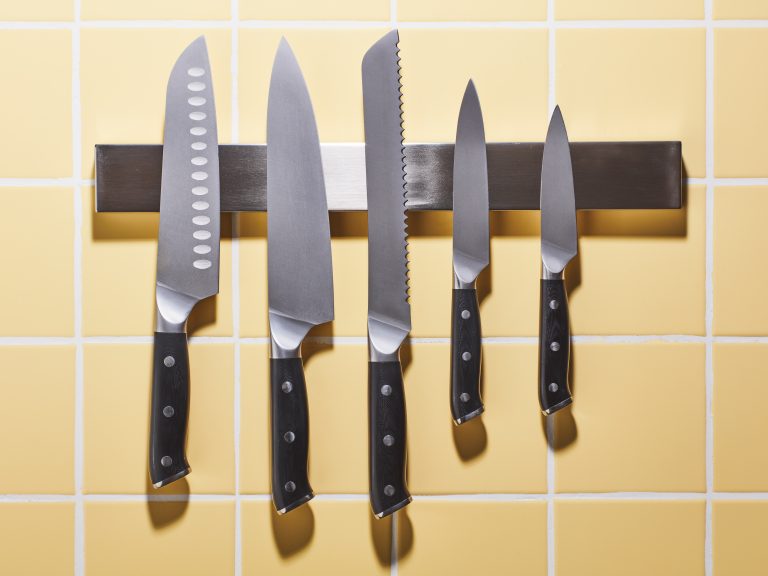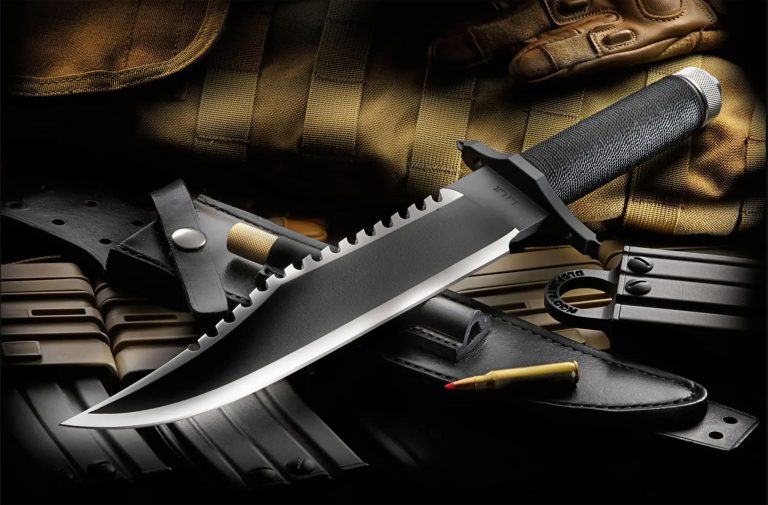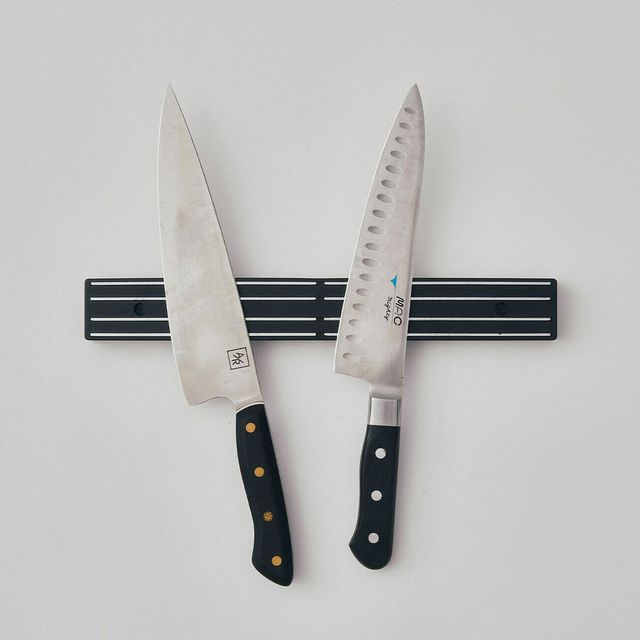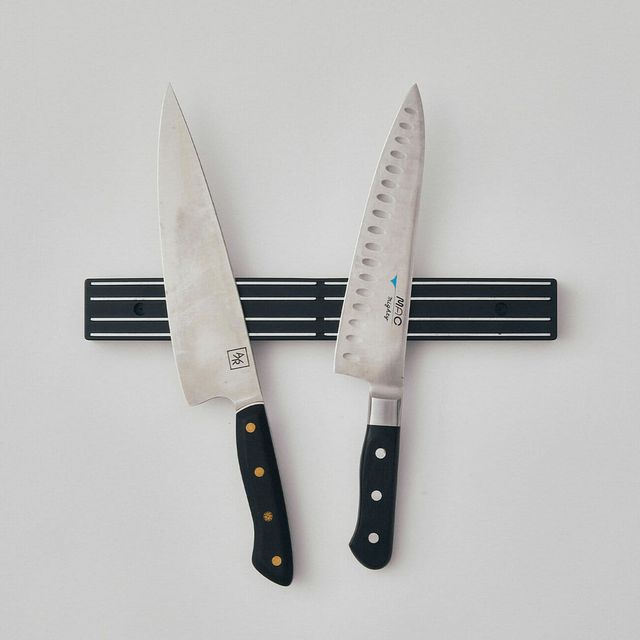Types of Kitchen Knives
The types of kitchen knives include the chef’s knife, paring knife, utility knife, serrated knife, and boning knife. Kitchen knives come in a variety of styles and sizes, each designed for specific tasks.
From slicing and dicing to peeling and trimming, having the right knife for the job is essential in any kitchen. We will explore the different types of kitchen knives and their uses, helping you choose the best knife set for your culinary needs.
Whether you’re a professional chef or a home cook, understanding the various types of kitchen knives will enhance your cooking experience and make meal preparation easier and more efficient. So, let’s dive in and discover the world of kitchen knives.
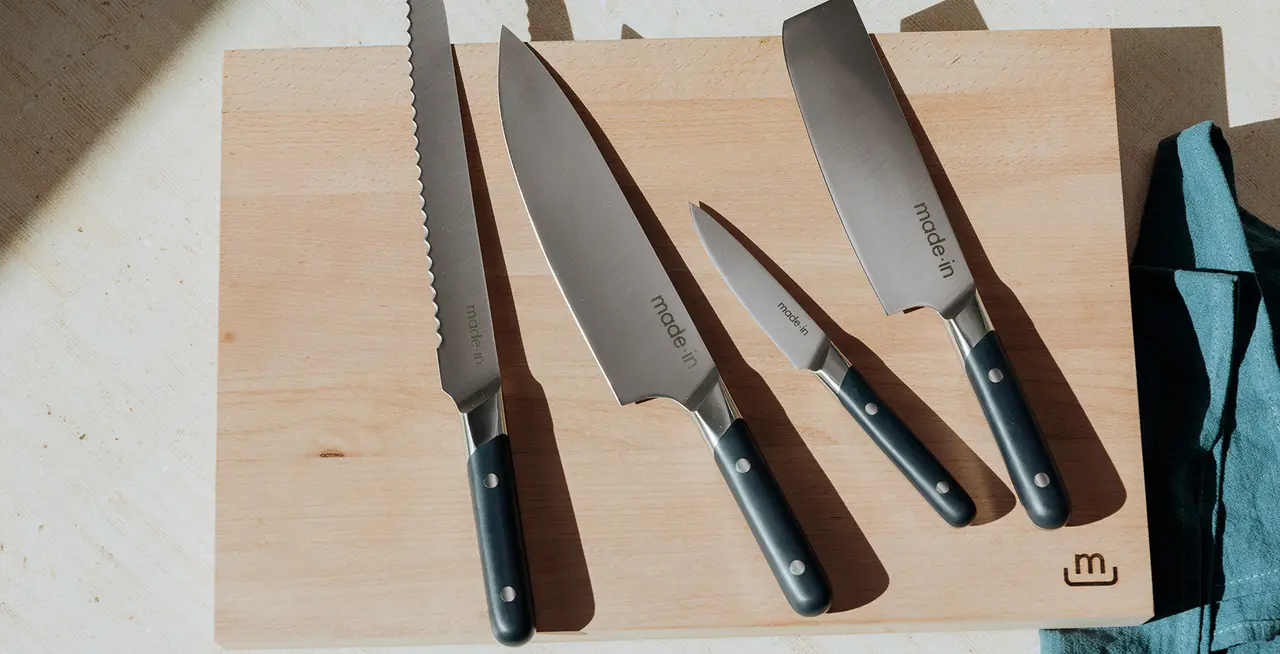
Credit: madeincookware.com
1. The Essential Kitchen Knives
The Chef’s Knife, also known as a cook’s knife, is a versatile tool that is a must-have in every kitchen. With its wide blade and sharp edge, it is perfect for slicing, dicing, and chopping fruits, vegetables, and meats. Its sturdy construction and ergonomic handle make it comfortable to use for long periods of time.
The Paring Knife is a small knife with a narrow blade that is ideal for precision tasks such as peeling, trimming, and slicing small fruits and vegetables. Its compact size and sharp point allow for greater control and accuracy.
The Utility Knife is a multipurpose knife that is smaller than a chef’s knife but larger than a paring knife. It can be used for a wide range of tasks, including slicing sandwiches, carving meat, and cutting larger fruits and vegetables. Its versatile design makes it a valuable tool in any kitchen.
2. Specialty Kitchen Knives For Specific Tasks
A santoku knife is a versatile Japanese knife that excels at precision cutting. With a shorter, wider blade and a straight edge, it offers superb control and is great for slicing, dicing, and mincing.
A bread knife, with its long serrated blade, is ideal for effortlessly slicing through crusty bread without crushing it. Its saw-like teeth enable clean and even cuts.
A carving knife is specifically designed to slice cooked meats such as roasts, hams, or turkeys. Its long, thin blade ensures smooth, thin slices with minimal tearing or shredding.
3. Unique Kitchen Knives For Specialized Cuisine
When it comes to kitchen knives, there are several options available for specialized cuisines. One of these unique knives is the Nakiri knife, which is specifically designed for Japanese cuisine. It features a rectangular blade that is perfect for precise vegetable slicing and chopping. Another specialized knife is the Cleaver knife, commonly used in Chinese cuisine. Its heavy, rectangular blade with a thick spine is ideal for cutting through bones and tough meats. Lastly, we have the Fillet knife, which is essential for seafood dishes. Its flexible, thin blade allows for delicate and precise filleting of fish.
4. Additional Kitchen Knives For Advanced Cooking Techniques
For advanced cooking techniques, there are several additional kitchen knives that can be useful. The boning knife is specifically designed for deboning meat, making it easier to separate the meat from the bones with precision. A serrated knife is perfect for slicing tomatoes and other tough-skinned fruits, as the serrated edge allows for clean and effortless cuts. Another essential knife for advanced cooking is the kitchen shears, which can be used for multi-purpose cutting tasks such as trimming herbs, cutting poultry, or even opening packaging. These knives are designed to enhance your culinary skills and make certain kitchen tasks much more manageable. Adding these additional knives to your collection can help elevate your cooking expertise and improve your overall culinary experience.
5. High-Quality Materials For Kitchen Knives
Kitchen knives are available in a variety of materials. One popular choice is stainless steel. Known for its durability and resistance to corrosion, stainless steel knives are easy to maintain and provide excellent cutting performance. Another option is carbon steel. These knives are known for their exceptional sharpness and edge retention. However, they require regular maintenance to prevent rusting. For those looking for a unique and beautiful option, damascus steel knives are a great choice. Damascus steel blades are made by layering different types of steel together to create a distinctive, wavy pattern. These knives not only look stunning but also offer excellent cutting performance. When shopping for kitchen knives, consider the material that best suits your needs and preferences to enhance your culinary experience.
6. What To Consider When Choosing Kitchen Knives
When choosing kitchen knives, there are several factors to consider. One important factor is the blade length and shape. The blade length determines the knife’s versatility and suitability for different tasks. A longer blade is ideal for slicing and a shorter blade is great for precision cutting. The shape of the blade also affects its functionality. For example, a chef’s knife has a curved blade that allows for rocking motion while cutting, whereas a santoku knife has a straighter blade for chopping and dicing.
Another consideration is the handle material and comfort. The handle should provide a secure and comfortable grip to prevent accidents and ensure ease of use. Common handle materials include wood, plastic, and stainless steel. Each material has its own benefits, such as durability, water resistance, and aesthetic appeal.
Lastly, balance and weight are important factors to evaluate. A well-balanced knife with a comfortable weight distribution makes it easier to control and reduces fatigue during prolonged use.
7. Proper Care And Maintenance Of Kitchen Knives
Cleaning and Drying: Properly cleaning and drying your kitchen knives is essential for their longevity and performance. After each use, ensure to wash the knives carefully with warm soapy water, using a non-abrasive sponge or cloth. Avoid using harsh chemicals or abrasive cleaners, as they can damage the blade. Gently dry the knives with a clean towel to prevent water spots or rust from forming. It is crucial to dry the knives thoroughly, including the handle and the area where the blade meets the handle, as moisture can lead to corrosion.
Sharpening and Honing: Regular sharpening and honing are necessary to maintain the sharpness and cutting ability of kitchen knives. While honing helps to realign the blade’s edge, sharpening removes metal to create a new edge. Consider using a sharpening stone or a honing rod to perform these tasks. Remember to follow the manufacturer’s instructions or seek professional assistance, as improper sharpening can damage the blade.
Storage and Safety Precautions: Proper storage and handling are vital to prevent accidents and maintain the quality of your knives. Store kitchen knives in a designated knife block, sheath, or magnetic holder to protect the blades and maintain their sharpness. Ensure that the knives are kept in a safe place, away from the reach of children. When handling knives, be mindful of your fingers and wrists, using proper cutting techniques to avoid injuries.
8. Tips For Safe Usage Of Kitchen Knives
When using kitchen knives, it is essential to follow proper techniques and safety measures to prevent accidents and injuries. One of the key aspects is the correct grip and technique for holding the knife. Ensure you hold the handle firmly with your dominant hand, placing your index finger along the spine of the blade for stability. This grip provides better control and minimizes the risk of slippage.
In addition, it is crucial to cut on stable surfaces to avoid accidents. A sturdy cutting board or surface offers support and prevents the knife from accidentally sliding or slipping. Avoid cutting directly on countertops or unstable surfaces.
When it comes to knife safety for children, it is vital to keep knives out of their reach and only allow supervised usage. Educate them on the importance of handling knives cautiously and demonstrate the correct grip and cutting technique. Additionally, consider using child-friendly knives with rounded tips and smaller sizes to reduce the risk of injuries.
| Tip | Description |
|---|---|
| Ensure correct grip | Hold the knife handle firmly with index finger along the blade for stability. |
| Cut on stable surfaces | Use a sturdy cutting board or surface to prevent knife slippage. |
| Knife safety for children | Keep knives out of their reach and use child-friendly options under supervision. |
Conclusion
Mastering the use of different types of kitchen knives can greatly enhance your culinary skills and make cooking a more enjoyable experience. Each knife has its specific purpose and can be used to efficiently handle a variety of tasks in the kitchen.
A chef’s knife is a versatile option that can handle most cutting, slicing, and dicing needs, while a serrated knife is ideal for slicing bread or delicate fruits and vegetables. A paring knife is perfect for intricate tasks like peeling, trimming, and precise cutting.
A boning knife and a cleaver are essential for handling meat and poultry. Lastly, a utility knife is a handy all-rounder for miscellaneous tasks. By investing in a good set of kitchen knives and understanding their uses, you can become a more efficient and skilled home cook.
Happy chopping!

